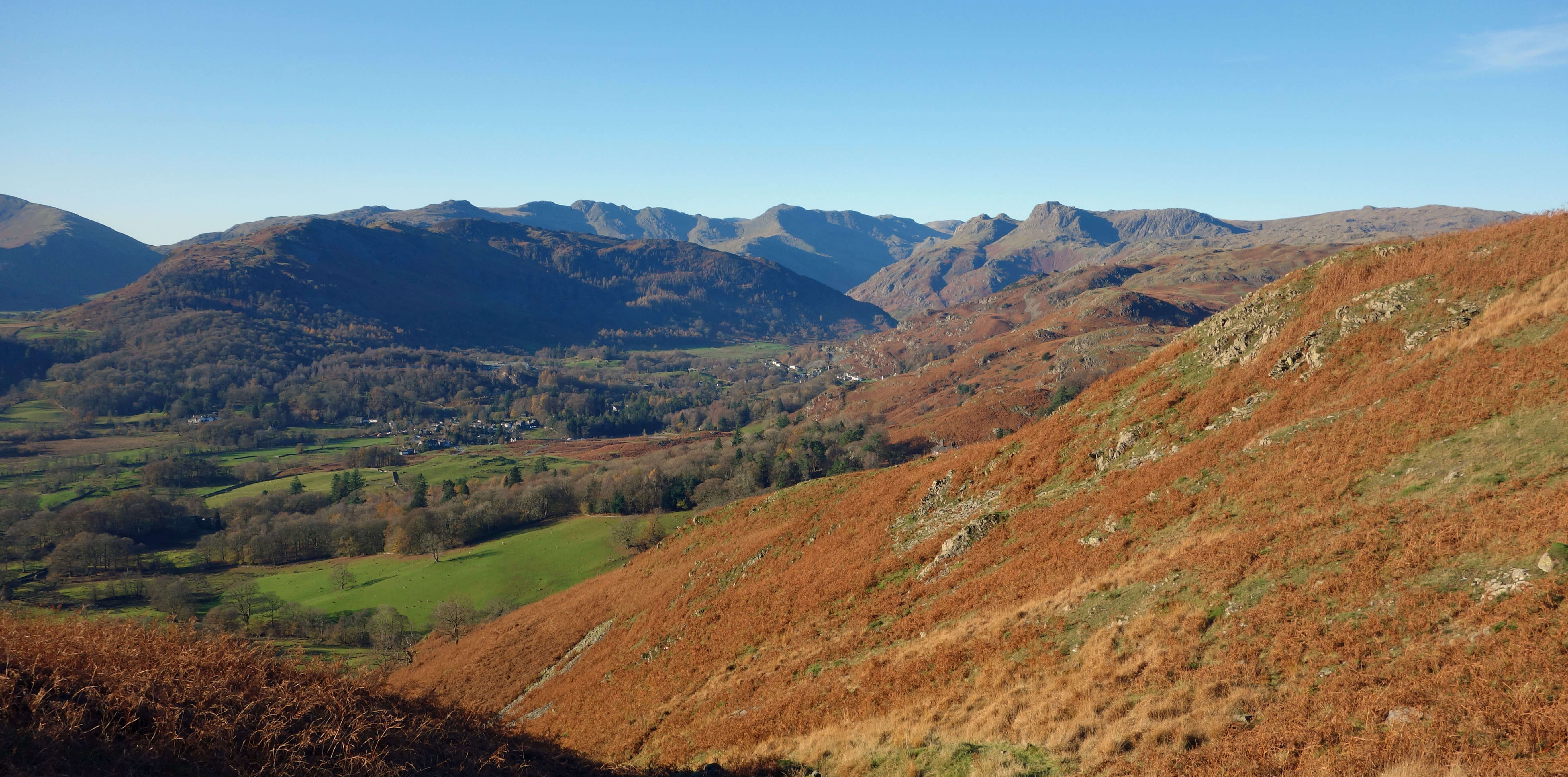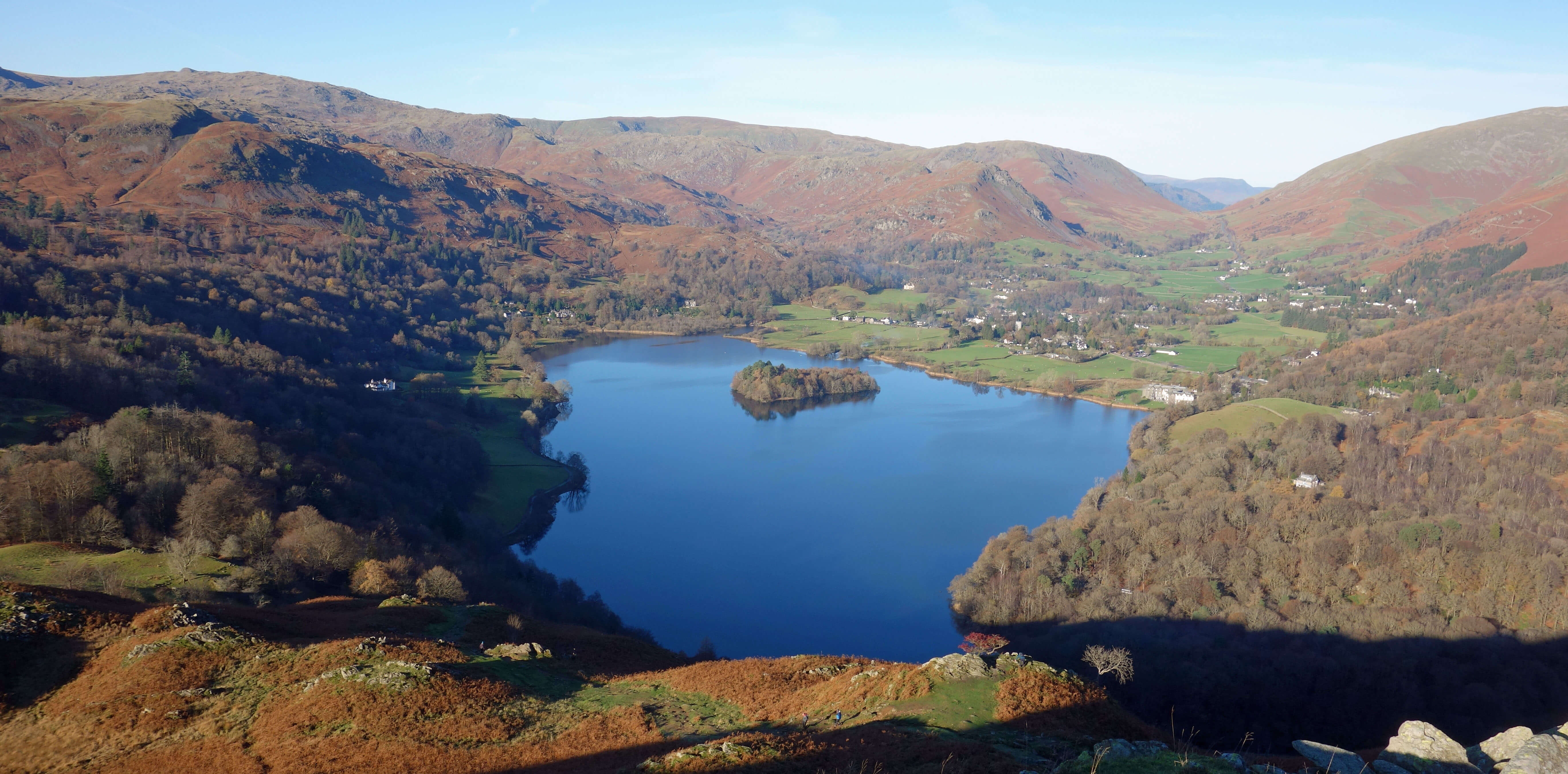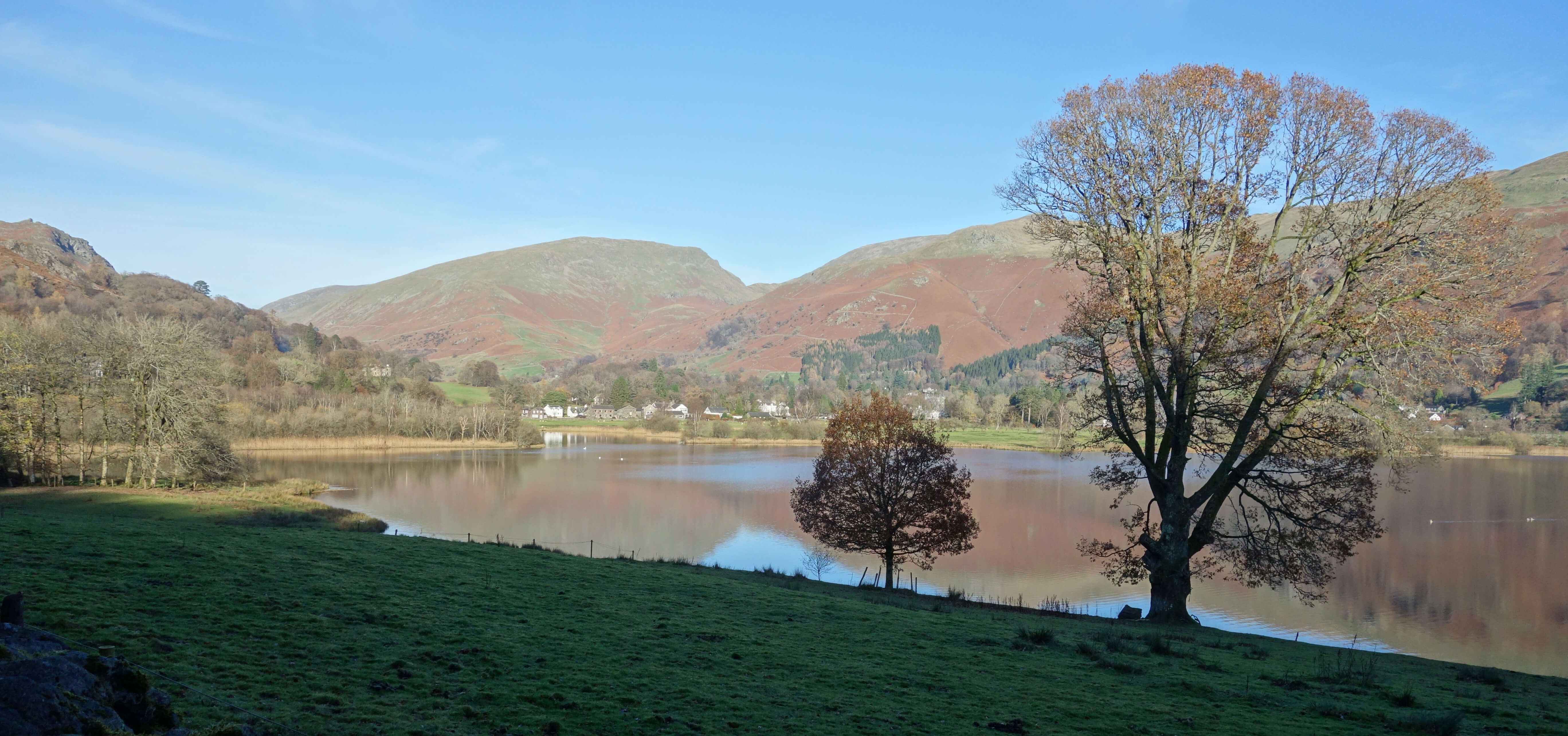

Home Preamble Index Areas Map References Me Drakkar

Lily Tarn
Taking the bridleway south, I noticed a sign saying that the larch were being felled because a fungus-like pathogen called phytophthora ramorum is spreading a highly contagious disease amongst the trees. I know how they feel. I then reached Loughrigg Tarn which must have one of the most impressive backdrops, when viewed from the north-east, of any Lakeland tarn, with the Langdale Pikes prominent. I sat for a snack to admire it for a while.
Loughrigg Tarn
I then scrambled up Loughrigg Fell (335 metres, although there seemed to be a lot more of them than on previous occasions). This is, of course, one of the most walked up fells in the Lake District and understandably so, since however often one walks up it, one always feels well rewarded by the magnificent views from the top in all directions, including Bowfell, the Langdale Pikes, Helm Crag, Skiddaw, the Fairfield Horseshoe and the Coniston Group. As usual, there were a good number of people about on the fell, most now without winter wear on a windless, sunny day.
Langdale from the slopes of Loughrigg Fell
It is not easy to relate specific weather events, such as a mild November here or floods in Canada, to longer-term climate change. My earliest winters were in Norfolk and (according to my memory) it was always frosty on Guy Fawkes night, we always had frost on the inside of windows, every footpath became an icy slide for queues of kids, and teachers took us outside for snowball fights. Perhaps winters were different here in North-West England, basking in the Gulf Stream and not blasted by freezing winds from Siberia, like Norfolk.“The effects of a warmer climate would be largely beneficial [for Cumbria], as far less fossil fuel would be required for domestic and industrial heating. The demand for electricity would fall … In addition, a longer growing season would be a boon to farmers [and] a lack of frost would benefit fruit growers” (Johnson 2009).So that’s all right, then. If there’s drought in Africa, floods in Bangladesh and fires in Greece, then I’ll be able to grow a few more courgettes.
“Where have all the winters gone? … 30 or 40 years ago we could count on up to four months of skiing almost every winter … Everything’s changing – not just the weather but the seasons. Can we really dream this year of a white Christmas?” (Griffin (2003), in Griffin (2005)).I dropped down from Loughrigg Fell to the north, with the perfect views of Grasmere below, walked through the National Trust’s Deerbolts Wood past Red Bank into the village of Grasmere. It was still moderately busy with people milling about, although much of it was closed. I sat with my sandwiches, wondering whether the sheltered inhabitants of Grasmere experience (or used to experience) harsh winters. Griffin’s observations concerned snow on the mountain tops – has the weather at lower levels changed at all? I turned to Cedric Robinson who was for 56 years the Queen’s Guide to the Sands of Morecambe Bay, which is as low a level as you can get. He led walks across the perilous bay and his life and that of his walkers depended upon him knowing about the bay’s weather. Nobody would be more aware of changes in the bay’s climate. In 2007 he wrote
“We seem to have lost our four seasons. Gone are the hard winters I knew as a child when almost every family in the village of Flookburgh owned a sledge and the snow seemed to lie for ages” (Robinson, 2007).

Grasmere
This is all most perplexing. Two locals who had more reason than anyone to be aware of the weather were convinced that the climate had changed in recent decades – but a meteorologist professed to be unsure. Our prime minister says that he was only convinced of the reality of human-caused climate change when he was briefed by scientists when he took office in 2019. But if he had then spoken to his friend Owen Paterson, Environment Secretary 2012-2014 and climate change sceptic, he would no doubt have been persuaded of the opposite.“It’s not the fact that our oil and coal will one day run out that matters most. Rather, it is the fact that the Earth’s capacity to absorb the pollution arising from their combustion will be exhausted long before that distant day … Global warming is the mother and father of environmental problems today. The degree of consensus among international scientists is remarkable: a 1.5°C to 4. 5°C warming by 2050” (Porritt, 1990).Even the House of Lords – hardly the most progressive of organisations – published a Select Committee Report on the Greenhouse Effect in 1990. It was written in response to a conference held in Toronto in 1988 at which the scientific opinion was that we were on course for a 3°C rise by 2030 and that we should aim to cut CO2 emissions by 20% by 2005. The debate on the report can be read online if you can stomach all the 'noble and gallant Lord' floweriness. Good Lords, I’m sure that 2030 seemed a long way away in 1990!

Grasmere
From Grasmere I followed the ‘coffin route’ to Rydal. This is a rather fine path that contours below Nab Scar, well above the busy A591. There were glimpses of Rydal Water but it was not seen to its best, being largely in shade with the sun now low over Loughrigg Fell. I did not pause in Rydal because I was feeling so weary that I feared that if I stopped then I might not be able to get going again. So as brisk a walk as I could manage through Rydal Park brought me back to Ambleside. Again the gloves were forgotten. Will I need gloves at all in 2030?
Home Preamble Index Areas Map References Me Drakkar
© John Self, Drakkar Press, 2018-

Top photo: The western Howgills from Dillicar; Bottom photo: Blencathra from Great Mell Fell